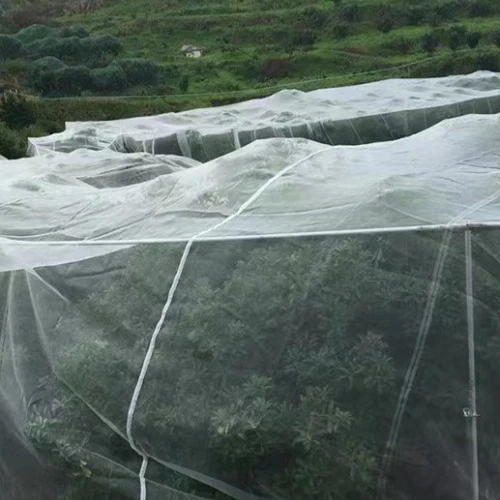-
 Afrikaans
Afrikaans -
 Albanian
Albanian -
 Amharic
Amharic -
 Arabic
Arabic -
 Armenian
Armenian -
 Azerbaijani
Azerbaijani -
 Basque
Basque -
 Belarusian
Belarusian -
 Bengali
Bengali -
 Bosnian
Bosnian -
 Bulgarian
Bulgarian -
 Catalan
Catalan -
 Cebuano
Cebuano -
 China
China -
 Corsican
Corsican -
 Croatian
Croatian -
 Czech
Czech -
 Danish
Danish -
 Dutch
Dutch -
 English
English -
 Esperanto
Esperanto -
 Estonian
Estonian -
 Finnish
Finnish -
 French
French -
 Frisian
Frisian -
 Galician
Galician -
 Georgian
Georgian -
 German
German -
 Greek
Greek -
 Gujarati
Gujarati -
 Haitian Creole
Haitian Creole -
 hausa
hausa -
 hawaiian
hawaiian -
 Hebrew
Hebrew -
 Hindi
Hindi -
 Miao
Miao -
 Hungarian
Hungarian -
 Icelandic
Icelandic -
 igbo
igbo -
 Indonesian
Indonesian -
 irish
irish -
 Italian
Italian -
 Japanese
Japanese -
 Javanese
Javanese -
 Kannada
Kannada -
 kazakh
kazakh -
 Khmer
Khmer -
 Rwandese
Rwandese -
 Korean
Korean -
 Kurdish
Kurdish -
 Kyrgyz
Kyrgyz -
 Lao
Lao -
 Latin
Latin -
 Latvian
Latvian -
 Lithuanian
Lithuanian -
 Luxembourgish
Luxembourgish -
 Macedonian
Macedonian -
 Malgashi
Malgashi -
 Malay
Malay -
 Malayalam
Malayalam -
 Maltese
Maltese -
 Maori
Maori -
 Marathi
Marathi -
 Mongolian
Mongolian -
 Myanmar
Myanmar -
 Nepali
Nepali -
 Norwegian
Norwegian -
 Norwegian
Norwegian -
 Occitan
Occitan -
 Pashto
Pashto -
 Persian
Persian -
 Polish
Polish -
 Portuguese
Portuguese -
 Punjabi
Punjabi -
 Romanian
Romanian -
 Russian
Russian -
 Samoan
Samoan -
 Scottish Gaelic
Scottish Gaelic -
 Serbian
Serbian -
 Sesotho
Sesotho -
 Shona
Shona -
 Sindhi
Sindhi -
 Sinhala
Sinhala -
 Slovak
Slovak -
 Slovenian
Slovenian -
 Somali
Somali -
 Spanish
Spanish -
 Sundanese
Sundanese -
 Swahili
Swahili -
 Swedish
Swedish -
 Tagalog
Tagalog -
 Tajik
Tajik -
 Tamil
Tamil -
 Tatar
Tatar -
 Telugu
Telugu -
 Thai
Thai -
 Turkish
Turkish -
 Turkmen
Turkmen -
 Ukrainian
Ukrainian -
 Urdu
Urdu -
 Uighur
Uighur -
 Uzbek
Uzbek -
 Vietnamese
Vietnamese -
 Welsh
Welsh -
 Bantu
Bantu -
 Yiddish
Yiddish -
 Yoruba
Yoruba -
 Zulu
Zulu
Effective Insect Management with Sweeping Nets | Your Ultimate Solution
Exploring the Role of Sweep Nets in Insect Collection and Study
Insects play a crucial role in our ecosystems, from pollination to decomposition. Understanding their diversity and behavior is essential for various fields including agriculture, ecology, and conservation. One fundamental tool employed by entomologists and researchers for collecting insects is the sweep net. This simple yet effective device aids in gathering specimens for study and provides insights into the structure of insect populations in different environments.
Exploring the Role of Sweep Nets in Insect Collection and Study
The use of sweep nets is particularly advantageous for sampling insect populations in various habitats, including fields, forests, and wetlands. By varying the speed and direction of the sweep, researchers can target specific groups of insects, such as sweeping low for ground-dwelling species or reaching high for arboreal insects. This adaptability makes sweep nets a favored tool in biodiversity assessments and ecological surveys.
sweeping net insect

Not only do sweep nets collect insects, but they also provide a snapshot of the biodiversity within a given area. For instance, researchers conducting a study on pollinator populations can use sweep nets to capture a range of bees and butterflies, helping to quantify species richness and abundance. Through this data, scientists can assess the health of ecosystems, monitor changes over time, and identify potential threats to insect populations, such as habitat loss or climate change.
Furthermore, the specimens collected through sweep netting can be used for various educational and research purposes. They can be identified and cataloged, contributing to our understanding of geographic distribution and ecological relationships. This information is invaluable for conservation efforts and for informing agricultural practices, especially in areas where crop pollination is directly linked to the health of wild insect populations.
One study reported in ecological journals highlights the effectiveness of using sweep nets compared to other collecting methods. The research demonstrated that sweep nets captured a greater diversity of insects in less time, underscoring the efficiency of this technique. Additionally, the collected samples can be preserved for further study, allowing researchers to investigate insect morphology, behavior, and genetics long after the fieldwork is completed.
In conclusion, sweep nets are an essential tool in the field of entomology, offering a practical means of collecting insects for research and educational purposes. Their ability to provide a representation of insect diversity makes them invaluable in ecological and conservation studies. As our understanding of insect populations deepens, so does our appreciation for the intricate web of life that these small creatures weave in our ecosystems. By utilizing tools like sweep nets, researchers are better equipped to protect and preserve the vital roles that insects play in maintaining the health of our planet.
-
The Sunshade Net Can Block Ultraviolet RaysNewsAug.11,2025
-
Main Application and Technology of Nylon ScreenNewsAug.11,2025
-
Green Anti UV Sunshade Net: The Perfect Combination of Ecological Friendliness and Practical PerformanceNewsAug.11,2025
-
Explore the Sunshade NetNewsAug.11,2025
-
Application and Development of Nylon Screen in Fuel Processing and TreatmentNewsAug.11,2025
-
Application and Advantages of Nylon Screen for AquacultureNewsAug.11,2025











